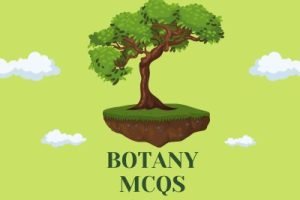MCQs on Fibre to Fabric
MCQs on Fibre to Fabric
1. Cotton, wool, silk are examples of ____________ .
(a) Plant Fibres
(b) Animal Fibres
(c) Natural Fibres
(d) Synthetic Fibres
Sol. (c) Natural Fibres.
2. The fleece of the lamb refers to ____________ .
(a) A popular sheep breed
(b) The white colour of the fur
(c) Hairy fibres of the sheep
(d) All of the above
Sol. (b) The white colour of the fur.
3. Which of the following statements is true about the rearing of silkworms?
(a)The rearing of silkworms for obtaining silk is called silk
(b)The rearing of silkworms for obtaining silk is called the cocoon
(c)The rearing of silkworms for obtaining silk is called sericulture
(d)The rearing of silkworms for obtaining silk is called silviculture
Sol. (c)The rearing of silkworms for obtaining silk is called sericulture.
4. Which of the following terms defines the process of silk production?
(a) Moriculture
(b) Sericulture
(c) Both (a) and (b)
(d) None of the above
Sol. (c) Both (a) and (b).
5. Rayon, Nylon and polyesters are examples of ____________ .
(a) Plant Fibres
(b) Animal Fibres
(c) Natural Fibres
(d) Synthetic Fibres
Sol. (d) Synthetic Fibres.
6. Which of the following is not a type of silk?
(a) Moth silk
(b) Mooga silk
(c) Tassar silk
(d) Mulberry silk
Sol. (a) Moth silk
7. Cotton, jute and coconut fibre are examples of ____________ .
(a) Plant Fibres
(b) Animal Fibres
(c) Natural Fibres
(d) Synthetic Fibres
Sol. (a) Plant Fibres
8. The process of cleaning sheared skin is called ____________ .
(a) Rearing
(b) Scouring
(c) Shearing
(d) All of the above
Sol. (b) Scouring.
9. Wool and silk are examples of ____________ .
(a) Plant Fibres
(b) Animal Fibres
(c) Natural Fibres
(d) Synthetic Fibres
Sol. (b) Animal Fibres
10. Sheep wool is used for making ______
(a) Baby blanket
(b) Pashmina Shawl
(c) Woollen Sweater
(d) All of the above
Sol. (c) Woollen Sweater.
11. Which of the following three processes are involved in converting fibre into fabric?
(a) Yarn → fibre → fabric
(b) Fibre → Yarn → fabric
(c) Both (a) and (b)
(d) None of the above
Sol. (b) Fibre → Yarn → fabric.
12. Silk, the natural form of fibre is obtained from
(a) Sheep
(b) Cocoon
(c) Jute plants
(d) Cotton balls
Sol. (b) Cocoon.
13. Which of the following fibres is called vegetable fibre?
(a) Cotton
(b) Wool
(c) Jute
(d) None of the above
Sol. (b) Wool
14. Which of the following statements is not true about wool- A natural form of fibre?
(a) Wool fibre is obtained from sheep
(b) Wool fibre is obtained from moth
(c) Wool fibre is obtained from llama
(d) Wool fibre is obtained from Alpaca
Sol. (b) Wool fiber is obtained from moth.
15. Which of the following fibres is used for making parachutes, ropes and sleeping bags?
(a) Rayon
(b) Nylon
(c) Polyesters
(d) All of the above
Sol. (b) Nylon.
16. Removal of fleece from sheep is known as ____________ .
(a) Shearing
(b) Rearing
(c) Rolling
(d) None of the above.
Sol. (a) Shearing.
17. Wool fibre is obtained from ____________ .
(a) Sheep
(b) Camel
(c) Yak
(d) All of the above
Sol. (d) All of the above.
18. Which of the following plant fibres is obtained from the vegetables?
(a) Coir
(b) Jute
(c) Hemp
(d) All of the above.
Sol. (a) Coir.
19. Which of the following plant fibres is known as the “golden fibre”?
(a) Coir
(b) Jute
(c) Hemp
(d) All of the above
Sol. (b) Jute.
20. Which of the following states are known for the largest cotton-producing crops?
(a) Punjab
(b) Gujarat
(c) Rajasthan
(d) All of the above
Sol. (d) All of the above.



